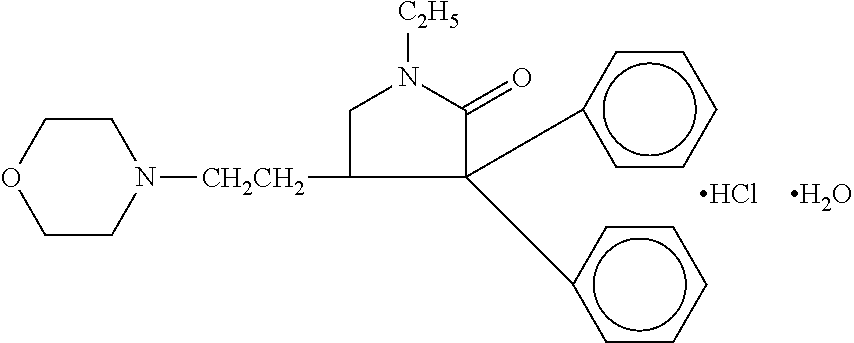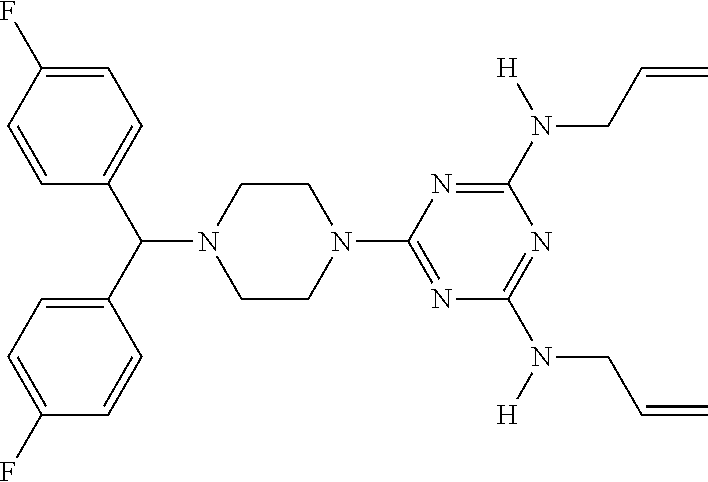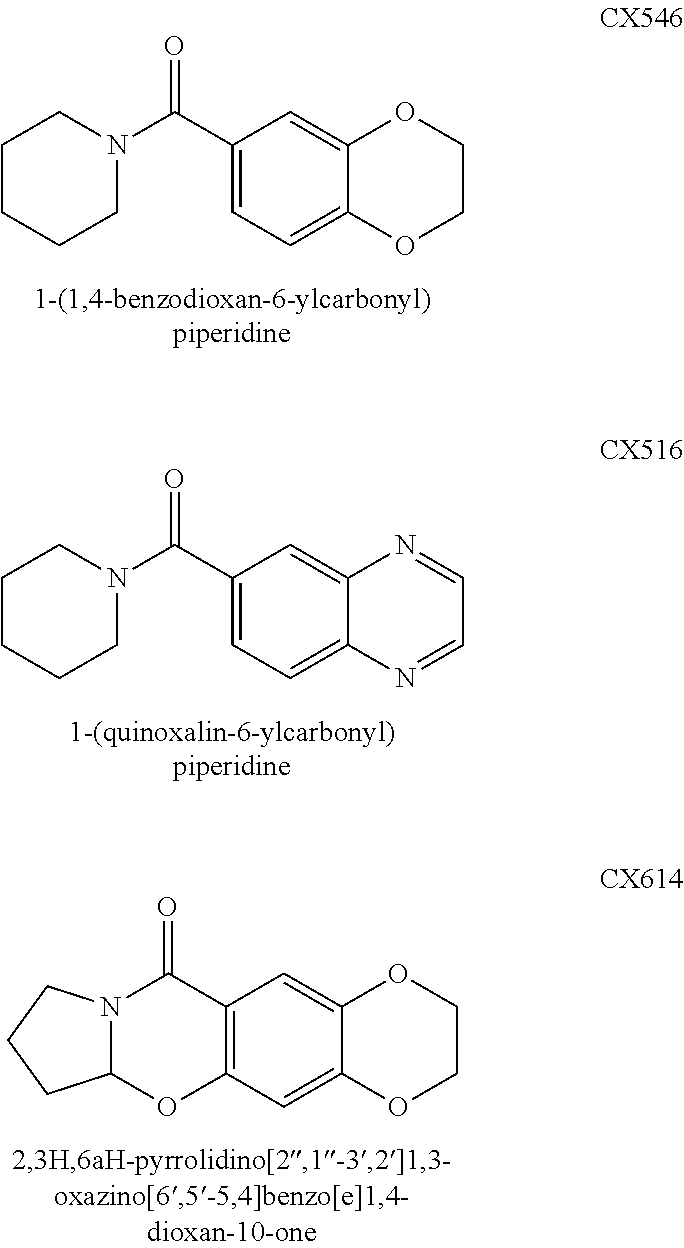Composition Comprising a Therapeutic Agent and a Respiratory Stimulant and Methods for the Use Thereof
a technology of respiratory stimulant and therapeutic agent, which is applied in the direction of capsule delivery, drug composition, microcapsule, etc., can solve the problems of increasing other problems, reducing work productivity and reducing the use of opioids. the effect of reducing the risk of overdos
- Summary
- Abstract
- Description
- Claims
- Application Information
AI Technical Summary
Benefits of technology
Problems solved by technology
Method used
Image
Examples
example 1
Oral Dosage Form with Doxapram
[0187]An oral dosage form constructed of an inner core of doxapram followed by alternating layers of doxapram and hydrocodone in a polysucrose gel matrix, which would establish opioid deterrent and respiratory stimulant properties to prevent both abuse and death from respiratory arrest.
[0188]If an opioid abuser were to take more oral opioid pills than prescribed or illicitly crush opioid pills for intravenous injection, the unopposed mu receptor activation would lead to pain relief but also other mu receptor effects, and respiratory depression. Without antagonism or other countermeasures, respiratory depression and death could result. The novel new pain drug combination would release a constant ratio of the opioid mu receptor agonist but also the respiratory stimulant drug, doxapram, a centrally acting chemoreceptor. Doxapram does not affect the mu receptors and therefore classifies Doxapram, as predominately a countermeasure to opioid mu receptor effec...
example 2
Layered Pill Manufacture and Testing
[0190]Characteristics of Doxapram and its metabolites: Doxapram's effect on minute ventilation is from 0 to 10 minutes, with return to baseline by 15 minutes. With 1.5 mg / kg bolus, almost immediate peak reached in serum, around 3 μg / ml. T½ of 3.4 hours. With 3.5 mg IV infusion 3.5 mg / kg / hr for 2 hours, the peak plasma concentration of 4.0 μg / ml was reached right after infusion stopped, with T½ 3.9 hours after stop of infusion. With 300 mg oral administration, plasma detection occurred at 1, 1.5, 2, and 2 hours after ingestion. Peak plasma concentration was 0.96 μg / ml. The oxidized metabolite is AHR 5955, ketodoxapram, which is metabolically active in lambs in a dose dependent fashion.
[0191]Pill Composition: Pills having the following compositions are created with two layers, Layer A and Layer B as shown below. Layer A Layer B 1 Doxapram 50 mg+5 mg Hydrocodone Doxapram 250 mg+250 mg HPMC 4000 cP 2 Doxapram 100 mg+5 mg Hydrocodone Doxapram 200 mg+20...
PUM
| Property | Measurement | Unit |
|---|---|---|
| Mass | aaaaa | aaaaa |
| Mass | aaaaa | aaaaa |
| Mass | aaaaa | aaaaa |
Abstract
Description
Claims
Application Information
 Login to View More
Login to View More - R&D
- Intellectual Property
- Life Sciences
- Materials
- Tech Scout
- Unparalleled Data Quality
- Higher Quality Content
- 60% Fewer Hallucinations
Browse by: Latest US Patents, China's latest patents, Technical Efficacy Thesaurus, Application Domain, Technology Topic, Popular Technical Reports.
© 2025 PatSnap. All rights reserved.Legal|Privacy policy|Modern Slavery Act Transparency Statement|Sitemap|About US| Contact US: help@patsnap.com



